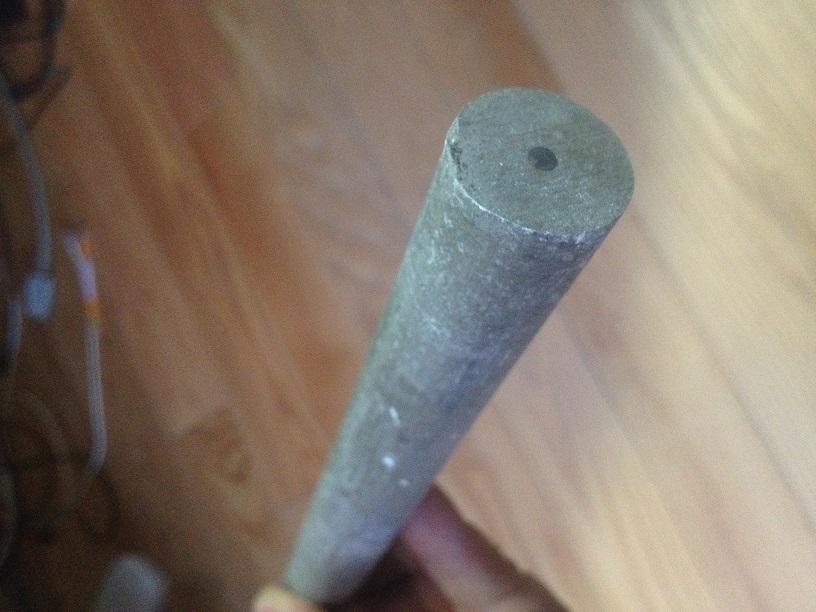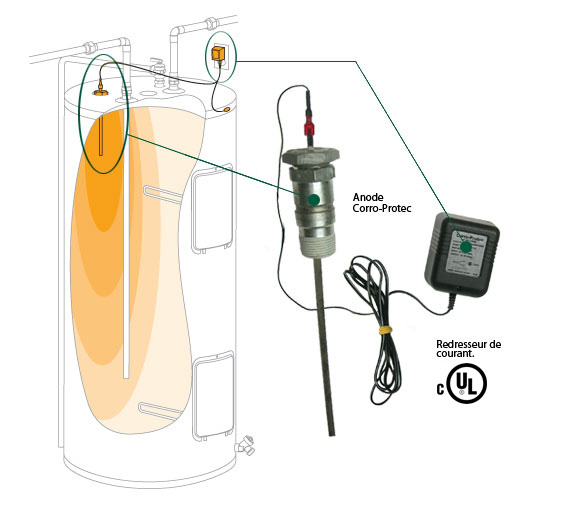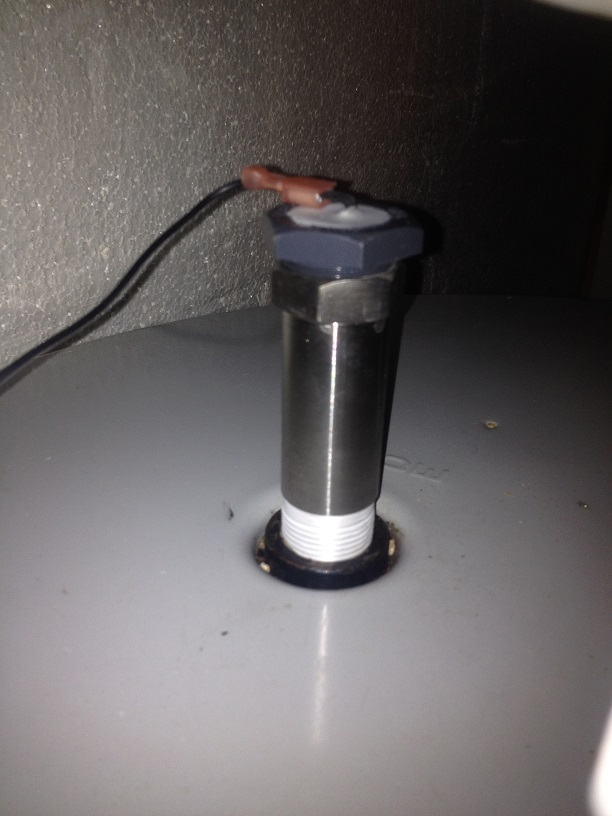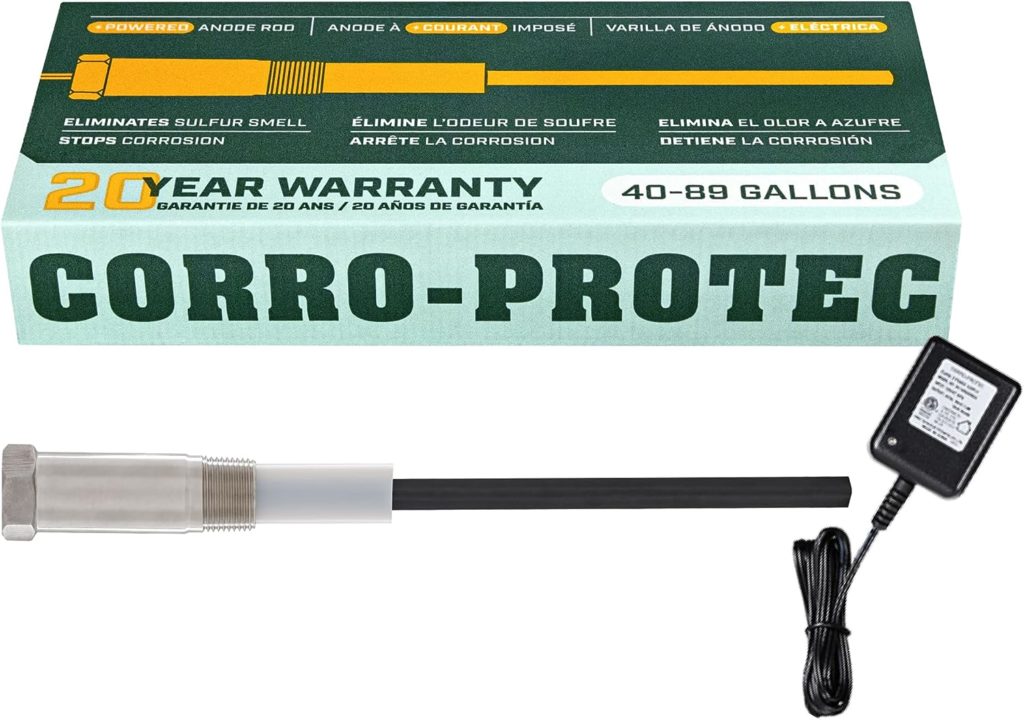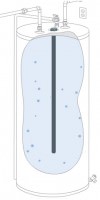 Water heaters are unfortunately not eternal. Elements eventually burn out, and the tank rusts. What can you do to extend their lifespan and protect the environment and your wallet? That’s what we’ll see in this post.
Water heaters are unfortunately not eternal. Elements eventually burn out, and the tank rusts. What can you do to extend their lifespan and protect the environment and your wallet? That’s what we’ll see in this post.
Water heaters are made up of a steel or iron tank containing heating elements controlled by thermostats.
As cold water is denser than hot water, it is found at the bottom of the tank, while the hot water is at the top, in the upper part of the tank.
When an electric water heater, completely filled with cold water, is powered on, the upper thermostat will only activate the upper heating element. This will heat the water in the top third of the water heater. When the top contents of the water heater become hot, the thermostat will cut off the power supply to the upper element and transfer it to the lower thermostat. As the water at the bottom is cold, the lower heating element will heat up until the entire content of the water heater is hot.
Failure of an element:
The lower heating element is the one most frequently used. When it fails, the bottom half of the water heater is no longer heated, and there will be less hot water available – only half of the tank. If the upper element fails, the upper part will no longer be heated, and the transfer of power to the lower element by the upper thermostat cannot happen, leaving only cold water.
The elements are replaceable and can be purchased for less than $30 in hardware stores. It is cost-effective to repair a water heater oneself if the tank is not rusted.
The heating elements typically have power ratings of 3000 Watts (12.5 Amperes) and 4500 Watts (18.75 Amperes). It is important to know that they should only be powered on when the tank is filled with water. The heat generated by the elements will cause them to melt if there is no water to cool them.
The sacrificial anode:
To protect the steel tank, all water heater manufacturers install a magnesium rod called the sacrificial anode inside the water heater. When two different metals are immersed in water, one of them will be corroded and emit electrons (i.e., a current) that will protect the other metal.
For those who remember their chemistry lessons, the chemical reaction is: Iron oxidizes in the presence of air’s dioxygen to form hematite (Fe203):”
In this formula, we can see the 12 electrons emitted for every 4 atoms of iron that become oxidized. When a voltage is supplied by a sacrificial anode, the electrons cannot circulate, preventing the formation of corrosion. Steel boats that are submerged in seawater are thus protected by sacrificial anodes made of aluminum. See photo at: http://en.wikipedia.org/wiki/Cathodic_protection
Therefore, a VITAL item for water heater maintenance is to replace the sacrificial anode every 6 years if our water comes from a well and every 3 years if our water comes from the city’s distribution network, due to the presence of chlorine in the water. In the brochure for Giant water heaters (manufacturer of Giant, Cascades, and super-Cascades) https://giantinc.com/wp-content/uploads/docs/GI-IM017En-Res-Elect.pdf, on page 4, you can see the location of the anode, accessible from the top of the water heater. The anode is screwed onto the tank with a 1 1/8-inch hex cap. I took a photo of my water heater’s anode after 3 years:
We can see that the magnesium has corroded significantly, and even though it’s not very clear in the photo, pieces of metal have been eroded from the rod. This is after only 3 years! After 6 years, you can imagine what the anode looks like, if there’s anything left of it!!!
Replacing the anode is so vital to prevent tank corrosion that the warranty is VOIDED if the anode is removed! This is stated on page 11 of the water heater installation manual, which typically, nobody reads! http://www.giantinc.com/wp-content/uploads/docs/GI-IM017En-Res-Elect.pdf
To give you another idea of what we are starting with, here’s a photo of the end of a new anode. You can also see the steel core pin at the center of the magnesium. This pin is welded to the steel cap used to screw the anode onto the tank.
By replacing the anode every 6 years, you reset the water heater’s anti-corrosion protection. This allows you to extend the lifespan of your water heater indefinitely.
An anode can be ordered from hardware stores as a special order and typically costs $25. Normally, you would use an MS145410 for a 40-gallon water heater, and an MS145510 for a 60-gallon one. The only difference between the two anodes is that the one for the 60-gallon heater is slightly longer than the one for a 40-gallon heater. A new, unused water heater costs $400. The cost-effectiveness of this maintenance operation is immediate.
The powered anode rod:
A powered anode rod (permanent anode) was developed by Quebec engineers and allows you to replace an old anode with a shorter one (suitable for restricted spaces). It is a product manufactured in Lévis, Quebec, by the company Corro Protec Inc. Their website is visible at: http://www.corroprotec.com/
Here is an overall representation of the anode I purchased from them.
The powered anode rods forces a current that prevents the iron in the tank from releasing its electrons in the oxidation reaction. The tank is thus protected as long as the anode is powered. You need to plug the small current transformer/rectifier into a 120-volt outlet. The required power is 0.36 Watts. Yes, 1/3 of a Watt. From the transformer’s output, there is a wire that connects to the end of the anode (small red connector in the illustration) and another wire that you attach to one of the screws on the water heater’s cover. A green LED on the rectifier indicates when the protection system is functioning. If there is no water in the tank, the system will remain inoperative, and the LED will remain off. The same applies if the 120V outlet is not powered.
The advantages of this anode are that it does not cause the foul smell of rotten eggs, which can be found in the case of magnesium anodes in sulfurous water. There is also no oxidized magnesium falling to the bottom of the tank, keeping it clean. There is no further maintenance required as long as the anode is powered and the green LED is lit.
The only downside is that you need to have a 120V outlet near the hot water tank.
My hot water tank, manufactured in May 1997 (almost 14 years old), is now protected from corrosion by this permanent anode. I highly recommend this solution to avoid unnecessarily replacing water heaters, which is better for the environment and your wallet!
François Boucher
The Corro-Protec powered anode rod is sold on Amazon and directly on the manufacturer’s website.
To purchase the Corro-Protec anode on Amazon, click HERE


